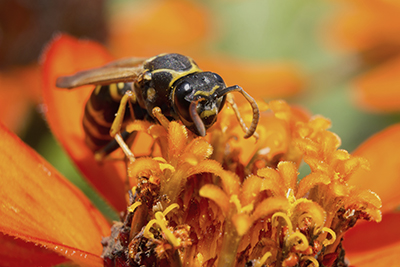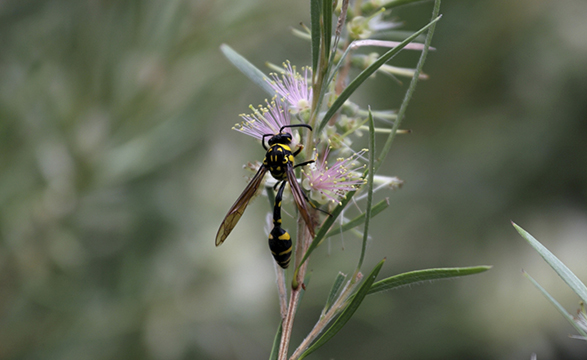Nobody likes being stung by an insect. In most cases, a sting causes localized pain, swelling and itching. A few individuals will go into anaphylactic shock as a result of a sting, a life-threatening reaction that requires immediate medical aid.
Types of Stinging Insects
There are several types of stinging insects in Maryland that people often encounter.

Bees
Bees commonly sting people. These flying insects are essential for pollination to produce vegetables, flowers and fruits, but their stings are quite painful. Bees only sting when they feel threatened or to defend their hives. When a honey bee stings, it leaves its stinger in the person. The stinger will continue to pulse venom into the skin, so it should be promptly removed by scraping it off the skin.

Paper Wasps
Paper wasps are quit common in Maryland and do sting. Females build small, gray paper-like nests on the eaves of homes, under hand rails and behind shutters. During the fall months, females will try to enter homes to cluster away from the cold. Despite their affinity to construct nests on homes and decks, paper wasps are beneficial to the environment because they consume pests such as caterpillars, which can wreak havoc on crops.

Yellow Jackets
When summer starts, yellow jackets appear. These black and yellow wasps are often mistaken for honey bees, but yellow jackets commonly congregate around garbage cans, compost bins and picnic tables. The University of Maryland reports that yellow jackets sting more people than any other type of bee or wasp.

Solitary Wasps
Several species of solitary wasps are frequently encountered by homeowners. They are usually shy and rarely sting unless cornered, but can look threatening. Mud daubers are probably the most commonly seen around homes in Maryland.
Sting Prevention
Here are several tips to help anyone avoid being stung.
- The best way to avoid being stung is to be alert when outside, especially when doing yardwork or home repairs.
- Closely watch areas around pools and ponds as many bees and wasps are attracted to water, and will come daily to collect the liquid.
- Avoid going barefoot as many honeybees get stepped up on while they collect pollen from clover or other low-growing plants.
- Don’t bother hives or try to remove wasp nests. Call a professional to handle all hive and nest removals.
- Keep food covered when outside and always make sure garbage cans have tight-fitting lids.
- Always look at your drink before taking a sip to make sure no bee or wasp has landed on the container or in the liquid.
With a bit of knowledge and prevention, stinging insects, humans and animals can all coexist peacefully. Don’t hesitate to call us if these stinging pests become invasive.

